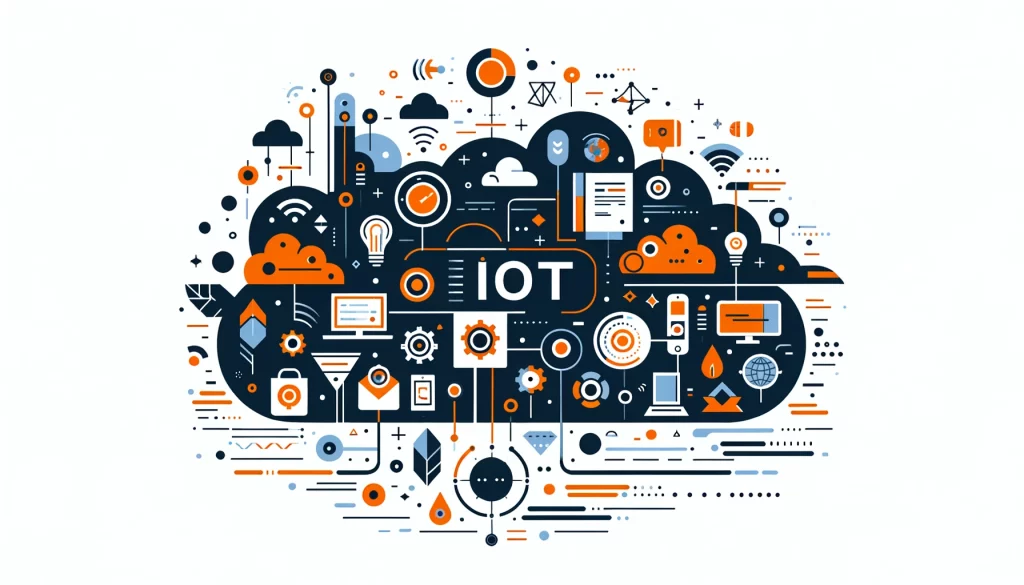
The Future of IoT Security: Managing Risks and Protecting Devices

Introduction
The Internet of Things (IoT) represents a transformative shift in how devices interact and communicate. From smart homes to industrial automation, IoT is revolutionizing various sectors. However, this increased connectivity brings significant security challenges. This guide will explain what IoT is, how to manage devices, security vulnerabilities, and strategies for managing IoT security.
What is the Internet of Things (IoT)?
Objects connect to the internet in the Internet of Things (IoT) to communicate and share information. These devices, often embedded with sensors, software, and other technologies, range from everyday household items to sophisticated industrial tools. The primary goal of IoT is to create a seamless, interconnected environment where devices can interact intelligently to improve efficiency, convenience, and functionality.
Examples of IoT Devices
- Smart Home Devices: You can control devices like thermostats, lights, cameras, and appliances with your phone or voice commands.
- Wearables: Fitness trackers, smartwatches, and health monitors that track physical activities and health metrics.
- Industrial IoT (IIoT): Machinery and sensors used in manufacturing, energy management, and logistics to optimize operations and monitor performance.
- Healthcare Devices: Remote patient monitoring systems, smart medical devices, and health management applications.
IoT Security Management?
Managing IoT devices involves several critical processes to ensure they operate correctly, securely, and efficiently. These processes include:
1. Device Provisioning
Provisioning entails preparing devices, establishing their network links, and confirming their identification and validation in the IoT framework. This procedure is vital for preserving device reliability and safety from the beginning.
2. Device Configuration
Once set up, devices need the correct configurations, including network parameters, functional parameters, and security configurations. Centralized systems can often handle these configurations remotely.
3. Firmware and Software Updates
Regular firmware and software updates are vital for maintaining device security and functionality. These updates address vulnerabilities, add new features, and improve performance. Automated update mechanisms help ensure devices remain up-to-date without requiring manual intervention.
4. Monitoring and Diagnostics
Continuous monitoring of IoT devices is essential for detecting anomalies, diagnosing issues, and ensuring optimal performance. Monitoring tools can track device health, performance metrics, and usage patterns.
5. Security Management
Securing IoT devices involves implementing robust security measures such as encryption, authentication, and access control. Security management also includes regular vulnerability assessments and penetration testing to identify and mitigate potential threats.
IoT Vulnerabilities and Security Issues
Despite the benefits of IoT, the widespread adoption of these devices has introduced numerous security challenges. Some of the most pressing vulnerabilities and security issues include:
1. Weak Authentication and Authorization
Many IoT devices have insufficient authentication and authorization mechanisms, making them susceptible to unauthorized access. Default passwords, weak credentials, and lack of multifactor authentication (MFA) are common issues.
2. Lack of Encryption
Data transmitted between IoT devices and central servers often lacks encryption, exposing sensitive information to interception and tampering. Ensuring end-to-end encryption is critical for protecting data integrity and privacy.
3. Insecure Firmware and Software
IoT devices frequently run outdated or insecure firmware and software, making them vulnerable to exploitation. Regular updates and patches are essential to address these vulnerabilities.
4. Physical Security Risks
Many IoT devices in easily accessible locations are prone to physical tampering because people can easily access them. Secure hardware design and tamper-evident features can help mitigate these risks.
5. Inadequate Network Security
IoT devices on unsecured networks are vulnerable to various types of attacks. These attacks include man-in-the-middle (MitM), denial-of-service (DoS), and network spoofing. Attackers can easily target these devices if they are not properly secured. Implementing robust network security measures is crucial for protecting these devices.
6. Data Privacy Concerns
The extensive data collection capabilities of IoT devices raise significant privacy concerns. We must protect user privacy by following privacy regulations when collecting, storing, and processing data.
IoT Security Management
Effective IoT security management involves a comprehensive approach that addresses the unique challenges posed by IoT ecosystems. Key strategies for managing IoT security include:
1. Implementing Strong Authentication Mechanisms
Utilize strong authentication mechanisms, such as MFA, to secure access to IoT devices. Avoid using default passwords and ensure that devices support secure password policies.
2. Ensuring Data Encryption
Implement end-to-end encryption for all data transmitted between IoT devices and central servers. This helps protect sensitive information from interception and tampering.
3. Regular Firmware and Software Updates
Establish a robust update mechanism to ensure that all IoT devices receive timely firmware and software updates. Automated update systems can help minimize the risk of outdated and vulnerable software.
4. Conducting Regular Security Assessments
Perform regular security assessments, including vulnerability assessments and penetration testing, to identify and address potential security weaknesses. Continuous monitoring and threat detection can help detect and respond to anomalies in real-time.
5. Securing Network Infrastructure
Use firewalls, IDS/IPS, and VPNs to protect IoT devices from network attacks. These security measures help prevent unauthorized access and keep your devices safe. Network segmentation can also help limit the impact of potential breaches.
6. Ensuring Device Integrity
Utilize secure boot and hardware-based security features to ensure device integrity. These measures help prevent unauthorized modifications to device firmware and software.
7. Data Privacy and Compliance
Ensure that data collection, storage, and processing practices comply with relevant privacy regulations. Implement data anonymization and minimization techniques to protect user privacy.
8. User Education and Awareness
Educate users about the importance of IoT security and provide guidelines for secure device usage. Awareness training can help users recognize potential threats and take appropriate actions to mitigate risks.
Conclusion
The Internet of Things (IoT) is transforming the way we interact with technology, offering unprecedented convenience and efficiency. However, the proliferation of IoT devices also brings significant security challenges. Understanding the vulnerabilities and implementing robust security measures are essential for protecting IoT ecosystems from potential threats.
As the Internet of Things expands, it’s important to stay informed about security trends and regularly update security measures. In a connected world, it’s crucial to protect IoT security to safeguard the future of our interconnected world.
For robust database security, data discovery (including OCR), and compliance, consider exploring DataSunrise’s user-friendly and flexible tools. Contact our team for an online demo session to see how DataSunrise can help secure your database environment effectively.
